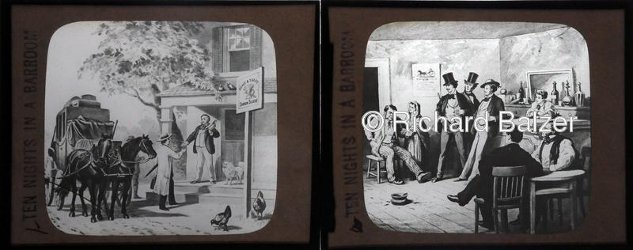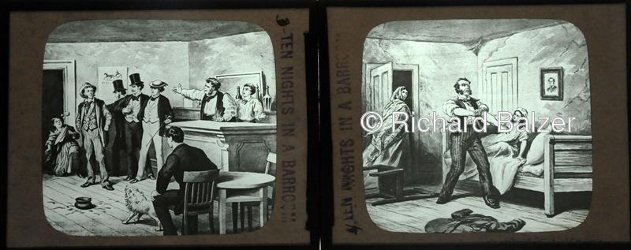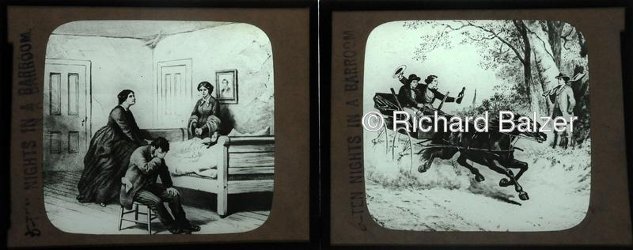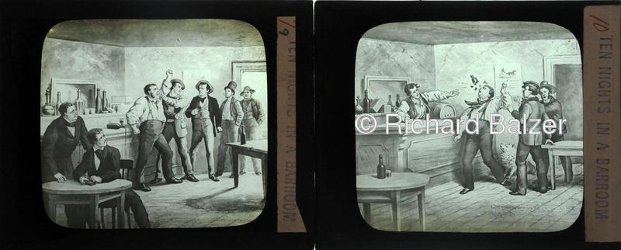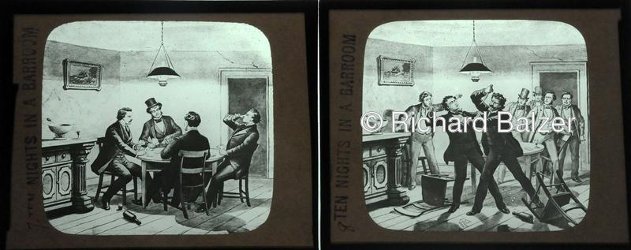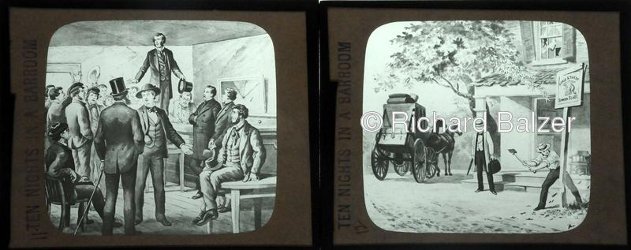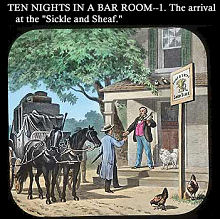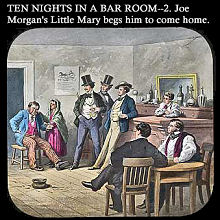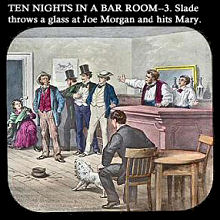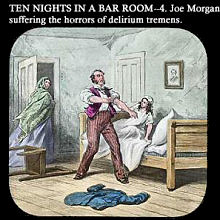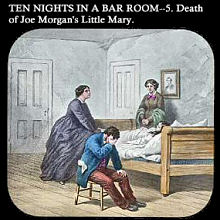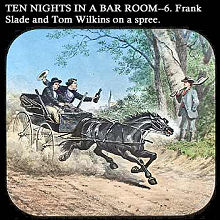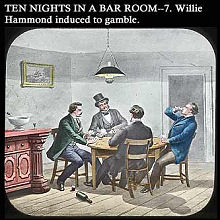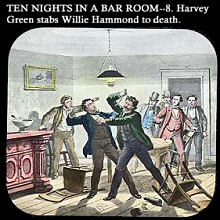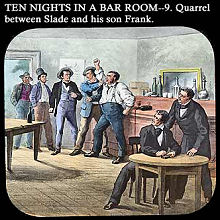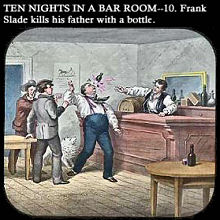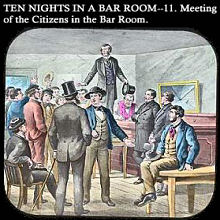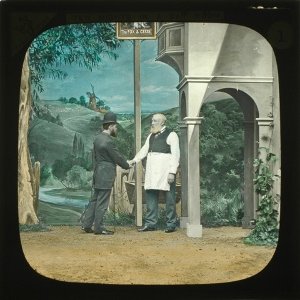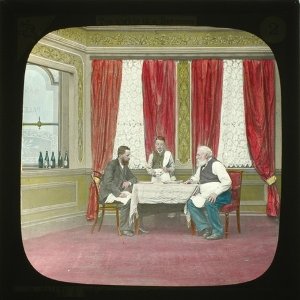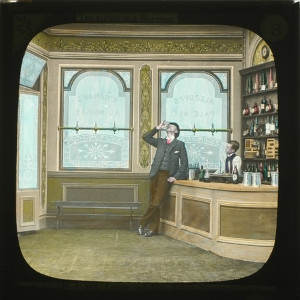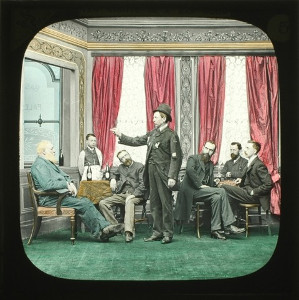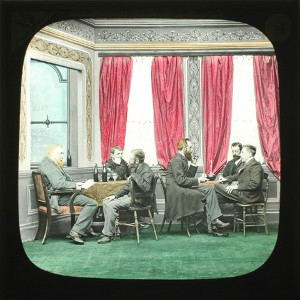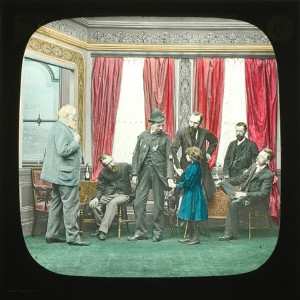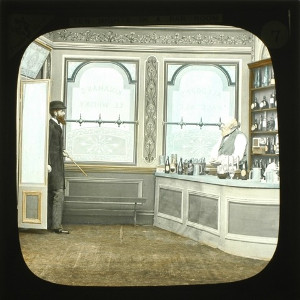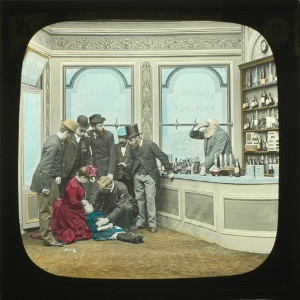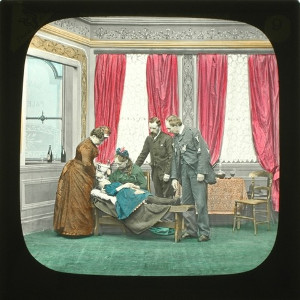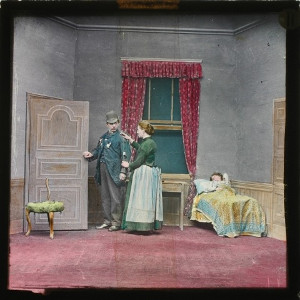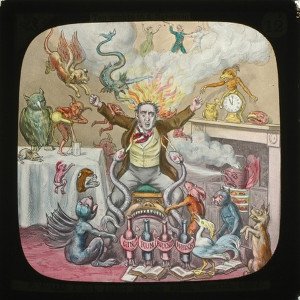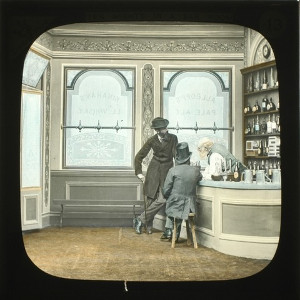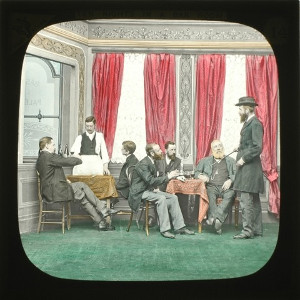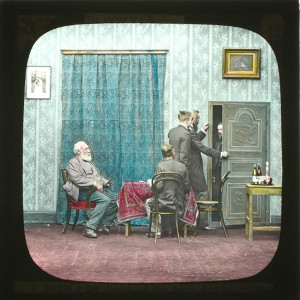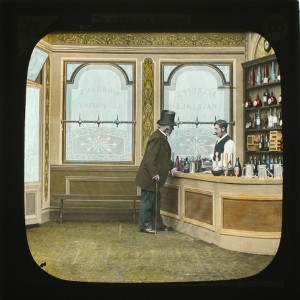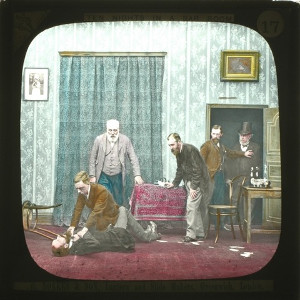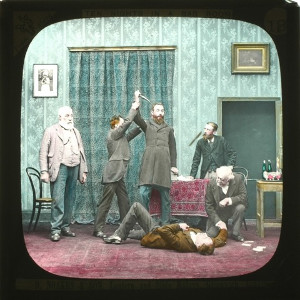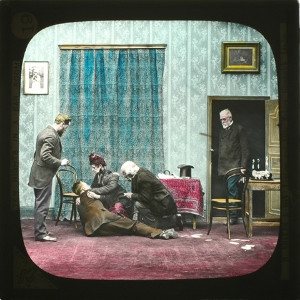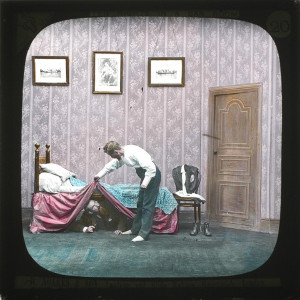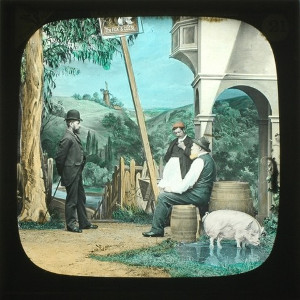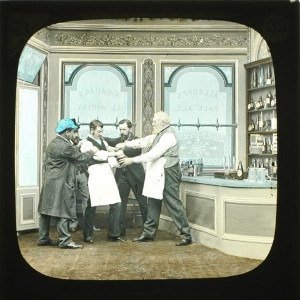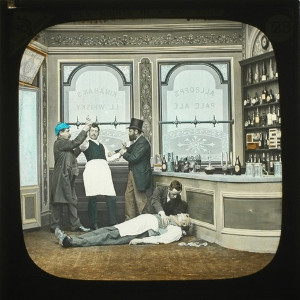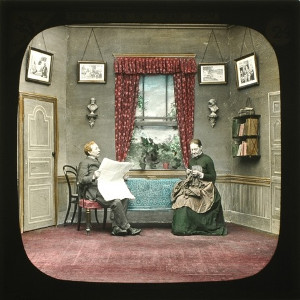Magic Lantern presentations of Ten Nights in a Bar-Room
Magic Lantern slides are frequently referred to as "stereopticons".
"Stereopticon" does not mean that the slides were stereoviews. The
slides were magic lantern slides. Stereopticon refers to the projector
which has two lenses, one on top of the other.
From Wikipedia: The term stereopticon has been widely misused to name a
stereoscope. A stereopticon will not project or display
stereoscopic/three-dimensional images. The two lenses are used to
dissolve between images when projected. All stereopticons can be
classified as magic lanterns, but not all magic lanterns are
stereopticons.
Ten Nights in a Bar-Room was a favorite stereopticon show for
ministers, church meetings as well as temperance lectures. Generally
the short slide show was accompanied by a lecture. These presentations
were very popular in the 1890's and early 1900's. The entertainment
value was frequently enhanced when combined with other shows, in
particular Uncle Tom's Cabin.
There were a number of different stereopticon sets of Ten Nights in a
Bar-Room. The ones I know of are described below.
C. W. Briggs Company (Casper Warren) produced a set of
illustrated slides. Briggs was located in Philadelphia. In 1872 it
purchased the magic lantern business of Frederick Langingham. Most of
the illustrations for Briggs were done by Joseph Boggs Beale
(1841-1926). Beale drew thousands of lantern slides for Briggs as well
as other firms. Some of these slides are pictured here and proper
attribution is given to Dick Balzer's fabulous website--http://www.dickbalzer.com/Beale.466.0.html
In 1891 The Youth's Companion advertised Magic
Lantern Slides that apparently were published by them. Set No. 1 Ten
Nights in a Bar-Room contained six slides. The price per set was 50
cents. Other sets including Uncle Tom's Cabin, Bible Views, etc. were
available. The Youth's Companion pointed out that Magic Lantern shows
could be money-makers for young people. Items such as tickets and
various projectors were also available for purchase.
A twelve slide stereopticon set was advertised by several companies in
the mid 1890's.
The McIntosh Battery and Optical Company in Chicago
is a company that appears to have been a seller of everything
projectable-projectors to slides. It noted in the 1895 catalogue that
over 100,000 slides were in stock. It advertised a 12 slide set.
They were 50 cents plain or $1.50 colored. The slides were accompanied
by a lecture.
1. Arrival at the Sickle and Sheaf
2. Joe Morgan's Little Mary asks her father to come home
3. Slade throws a glass at Joe Morgan and hits Mary
4. Joe Morgan suffering the horrors of delirium tremens
5. The death of Little Mary
6. Frank Slade and Tom Wilkins riding off on a spree
7. Willie Hammond induced by Harvey Green to Gamble
8. Harvey Green Stabs Willie hammond to daeth
9. Quarrel between Slade and his son Frank
10. Frank Slade kills his father with a bottle
11. Meeting of the citizens in the bar-room
12. The departure from the Sickle and Sheaf.
T. H. McAllister Company, Manufacturing Opticians
appeared to advertise the above set also. It was a New York City firm
located at 49 Nassau Street
(Credit to http://www.luikerwaal.com/newframe_uk.htm?/temperance01_uk.htm
for the McAllister slide pictures).
In 1897 Sears, Roebuck advertised a set of four
slides with twelve pictures.
Sears sold a number of sets that could be shown individually or in
conjunction with other sets.
This is set No. 5 which cost $1.00.
The slides:
28. Sickle and Sheaf
29. Joe Slade with Delirium Tremens
30. Willie Hammond Induced to Gamble
31. Frank Slade Kills His Father
This set was produced by York and Son, Optical
Lantern Slide Makers in London. This 24 slide set was produced before
1891.
The York and Son set can be seen here: http://www.slides.uni-trier.de/set/index.php?id=3000709
The adapter to slide form was Ellis Reynolds.
Of note is that York and Son produced a 10 slide set of Arthur's The
Pitcher of Cool Water. the date is unknown.
Another known set was manufactured in England by W. C. Hughes
and contained 14 slides. It is advertised along with their extensive
list in 1898 in the Photographie Dealer.
